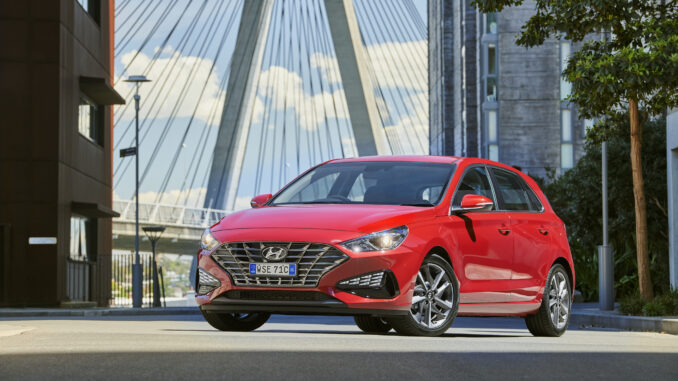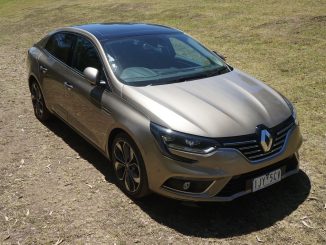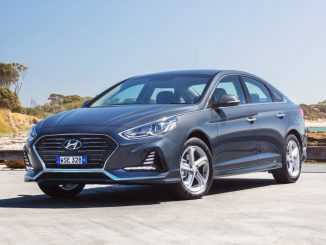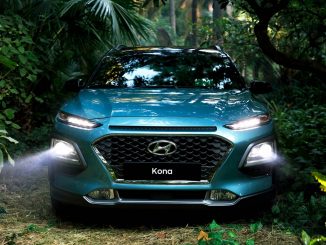
Hyundai i30, there’s no mistaking what it is but dig a little deeper and you might be surprised just what the latest Hyundai i30 hatch offers, even in the base model (driven).
There’s a 2.0-litre, direct injection, petrol four cylinder engine under the bonnet, a swag of advanced driver assist technology going under the name of Hyundai SmartSense, 16-inch alloy wheels and a new look featuring changes to the bumper and grille.
They tweaked the styling for a more aggressive look overall featuring a wide frontal look shared with i30 sedan, a toothy grille, new triangular headlights and tail lights along with new front and rear bumpers.
As is the case with all Hyundais, the dynamics are locally calibrated for optimum ride and comfort.
There’s a European look to i30 hatch’s profile but it’s much easier on the eye compared to say a BMW 1-series or Benz A-Class.
The stance is sporty and there aren’t too many contrived style lines on the skin unlike the i30 sedan’s arrow creases on the front doors.
Good colour palette too with a striking blue and bright red joining the usual array of white and greys.
The thing to remember here, particularly regarding this base model i30 hatch, is the impressive array of standard kit. Sure, Hyundai selectively chose what advanced driver assist technology goes into this model and it isn’t the entire inventory but competitors are on notice…
Exterior
It’s an evolution of the i30 look we have seen for quite a few years with a more aggressive edge especially around the grille and frontal area. They smoothed out the body on i30 hatch compared with the new sedan giving it a distinctively Euro look from all angles.
The Koreans have nailed it in terms of visual appeal with i30 by creating a sporty yet not too outrageous look for what is essentially a mainstream five door hatchback.
It’s not quite as wild as the i30 sedan at the front but displays a sporty and functional face to the world.
Happy to see alloys as standard on the entry level car and the neat vents and garnishes applied with the active air management front vents a standout.
Interior
Inside is standard Hyundai and once again, not as radical as the i30 sedan. The lines are clean and the dash dominated by a large central screen. There’s a neat driver’s instrument pod and chunky multi-function wheel. Soft touch surfaces where needed.
What surprises is the leather “appointed” seats meaning leather on the surfaces you touch. That’s pretty darn good in a car selling for $23,490 (manual) as is the level of kit inside The tones are grey but smart and there’s plenty of room for four, maybe five inside and a large load space down the back expandable with the rear seats folded.
You’ll have to rely on streaming satnav through your phone as the base i30 doesn’t get a hardwired system.
The audio is decent with 6 speakers and the blue instrument lighting is easy to read and looks good.
I like the rear aircon vents and the electric park brake.
Features
Surprisingly generous amount of kit in this car…
- Leather
- Smart cruise
- 16-inch alloys
- Full size spare
- Direct injection engine
- Auto stop and go for traffic jams
- 3 drive modes (auto)
- Happily uses 91 RON fuel
- Heated exterior mirrors
Drive and Engine
Plenty of punch comes out of the four pot, 2.0-litre, direct injection, petrol engine that has other efficiency boosting features.
It’s good for 120kW and 203Nm and consumes a claimed 7.4-litres of unleaded per 100km. The 6-speed auto driven makes swift changes and runs smoothly and efficiently. No complaints there at all.
I like the way Hyundai tailors its cars to Aussie driving conditions with a slight sporty edge to the suspension, steering and brakes. It makes driving a small hatch like this fun and engaging… somewhat unexpected.
It’s interesting to note that the rear suspension on the i30 hatch is a simple torsion beam but the engineers have made the most of it and the car behaves well.
It weighs in at 1276kg (auto) but feels nimble and brisk from behind the wheel.
A manual gear change is available on the selector.
Driven over about 1000km during Christmas, the i30 scrubs up well on a long haul offering occupants plenty of comfort while not taxing the wallet too much at the bowser.
Safety
This is where the test car hits its straps because Hyundai Australia has carefully specified a good amount of advanced driver assist technology in this base model.
It gets autonomous emergency braking with pedestrian and cyclist detection, forward collision warning, auto high beam, lane keeping assist, lane following with stop and go and smart cruise control to name just a few standard features.
Current i30 scores a 5-star crash rating going further with tyre pressure monitoring, auto high beam and heated exterior mirrors among its features list.
Good Bits
- Impressive value
- Generous advanced driver assist tech’
- Uses regular unleaded
Not So Good Bits
- No satnav
- Over active lane keeping
- Smart cruise allows too much room in front.
Summary
Holy crap, why don’t we just let the Koreans make all the cars and be done with it.
This particular car is all you really need for everyday transport as it’s safe, economical, comfortable looks good and cost little to run thanks to the fuel economy, fixed price servicing and long warranty.
You can easily spend twice as much on some flash Euro job and get an inferior car in all respects including style.
Why would you bother…?
Also look at;
Facts and Figures: 2021 Hyundai i30 hatch auto
- Engine: 2.0L four-cylinder petrol producing 120kW/203Nm
- Transmission: Six-speed automatic
- Warranty: 5/ unlimited km
- Safety: Five stars
- Origin: South Korea
- Price: from $25,429 MLP*
*MLP – Manufacturers List Price includes GST and LCT but excluding statutory charges, dealer costs and dealer delivery. See your dealer for RDAP. Does not include price of any options.













Be the first to comment